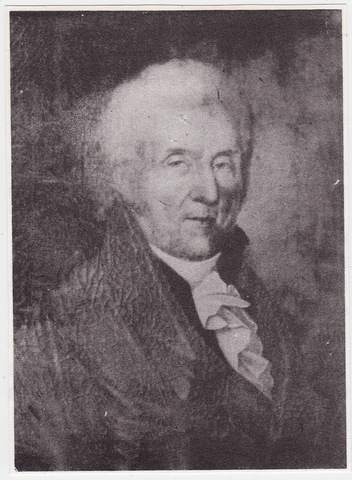|
Kaja Kallas's Second Cabinet
The second cabinet of Kaja Kallas, (sometimes referred to as the Viljandi government (Estonian: ''Viljandi valitsus'') due to the negotiations of the government coalition having taken place there) was the cabinet of Estonia from 18 July 2022 until 17 April 2023 when it was succeeded by the third Kallas cabinet following the 2023 election. Background On 3 June 2022, Kaja Kallas dismissed Centre Party ministers from her first cabinet after several weeks of disputes between the two parties and the Centre Party voting with opposition against a government supported bill. Continuing with a minority cabinet, the Reform Party called up the conservative Isamaa and the Social Democrats for talks on a possible new coalition. On July 8, the three parties announced that they agreed on forming a new coalition government. Although law allows ministerial changes without cabinet resignation, Kallas stepped back so that the new coalition got to vote for the prime minister's mandate in the par ... [...More Info...] [...Related Items...] OR: [Wikipedia] [Google] [Baidu] |
Estonia
Estonia, officially the Republic of Estonia, is a country in Northern Europe. It is bordered to the north by the Gulf of Finland across from Finland, to the west by the Baltic Sea across from Sweden, to the south by Latvia, and to the east by Russia. The territory of Estonia consists of the mainland, the larger islands of Saaremaa and Hiiumaa, and over 2,300 other islands and islets on the east coast of the Baltic Sea. Its capital Tallinn and Tartu are the two largest List of cities and towns in Estonia, urban areas. The Estonian language is the official language and the first language of the Estonians, majority of its population of nearly 1.4 million. Estonia is one of the least populous members of the European Union and NATO. Present-day Estonia has been inhabited since at least 9,000 BC. The Ancient Estonia#Early Middle Ages, medieval indigenous population of Estonia was one of the last pagan civilisations in Europe to adopt Christianity following the Northern Crusades in the ... [...More Info...] [...Related Items...] OR: [Wikipedia] [Google] [Baidu] |
Riigikogu
The Riigikogu (, from Estonian ''riigi-'', "of the state", and ''kogu'', "assembly") is the unicameral parliament of Estonia. In addition to approving legislation, the Parliament appoints high officials, including the prime minister and chief justice of the Supreme Court, and elects (either alone or, if necessary, together with representatives of local government within a broader electoral college) the president. Among its other tasks, the Riigikogu also ratifies significant foreign treaties that impose military and proprietary obligations and bring about changes in law, as well as approves the budget presented by the government as law, and monitors the executive power. History History 23 April 1919, the opening session of the Estonian Constituent Assembly is considered the founding date of the Parliament of Estonia. Established under the 1920 constitution, the Riigikogu had 100 members elected for a three-year term on the basis of proportional representation. Elections ... [...More Info...] [...Related Items...] OR: [Wikipedia] [Google] [Baidu] |
Ministry Of Foreign Affairs (Estonia)
The Ministry of Foreign Affairs of Estonia () is a Cabinet-level governmental agency in Estonia in charge of conducting and designing Estonian Foreign policy. History The Ministry of Foreign Affairs of Estonia was established in 1919 soon after the declaration of independence of Estonia on February 23, 1918. After the occupation of Estonia by the Soviet Union in September 1939 following the Molotov–Ribbentrop Pact in August of the same year. After establishment of the Soviet rule in Estonia, the Estonian diplomatic corps remained in exile and while a national government in exile was eventually established, the diplomatic corps in exile remained a separate institution throughout the Cold War era and the two institutions did not recognize each other. Both the Estonian diplomats and the government in exile promoted and called for Estonian independence abroad. Among the Estonian Minister of Foreign Affairs in exile were August Rei (1944–1945), Aleksander Warma (1953–1964 ... [...More Info...] [...Related Items...] OR: [Wikipedia] [Google] [Baidu] |
Riina Solman
Riina Solman (; born 23 June 1972) is an Estonian politician. She served as Minister of Population Affairs in the second cabinet of Jüri Ratas from 29 April 2019 to 26 January 2021. The office of Minister of Population Affairs was removed in the cabinet of Prime Minister Kaja Kallas. She stood for the Riigikogu in the 2023 elections, received 1773 votes in constituency No 1 (Haabersti, Põhja-Tallinn and Kristiine Kristiine ( Estonian for ' Christina') is one of the 8 administrative districts () of Tallinn, the capital of Estonia. Kristiine is divided into 3 subdistricts (): * Järve * Lilleküla * Tondi The name of Kristiine originates from the Swedish ...) and was elected. References 1972 births 21st-century Estonian women politicians Government ministers of Estonia Isamaa politicians Living people Members of the Riigikogu, 2023–2027 Politicians from Viljandi Politicians from Viljandi County Tallinn University alumni Women government ministers of ... [...More Info...] [...Related Items...] OR: [Wikipedia] [Google] [Baidu] |
Minister Of Public Administration (Estonia)
{{Estonia-poli-stub ...
The Minister of Public Administration of Estonia () was a minister at the Ministry of Finance () in the Estonian Government. List of ministers of public administration See also *Ministry of Finance References External linksMinistry of Finance Public Administration Public administration, or public policy and administration refers to "the management of public programs", or the "translation of politics into the reality that citizens see every day",Kettl, Donald and James Fessler. 2009. ''The Politics of the ... [...More Info...] [...Related Items...] OR: [Wikipedia] [Google] [Baidu] |
Ministry Of Finance (Estonia)
{{Estonia-poli-stub ...
The Ministry of Finance is the Estonian government department responsible for the implementation of tax, financial and fiscal policies, and setting economic goals. See also * Minister of Finance * Minister of Public Administration References External links Ministry of Finance Finance Estonia Estonia, officially the Republic of Estonia, is a country in Northern Europe. It is bordered to the north by the Gulf of Finland across from Finland, to the west by the Baltic Sea across from Sweden, to the south by Latvia, and to the east by Ru ... [...More Info...] [...Related Items...] OR: [Wikipedia] [Google] [Baidu] |
Prime Minister Of Estonia
The prime minister of Estonia () is the head of government of the Estonia, Republic of Estonia. The prime minister is nominated by the President of Estonia, president after appropriate consultations with the parliamentary factions and confirmed by the parliament (''Riigikogu''). In case of disagreement, the parliament can reject the president's nomination and choose their own candidate. In practice, since the prime minister must maintain the confidence of parliament in order to remain in office, he or she is usually the leader of the senior partner in the governing coalition. The current prime minister is Kristen Michal of the Estonian Reform Party, Reform Party. He took the office on 23 July 2024 following the resignation of Kaja Kallas. The prime minister does not head any specific ministry. Rather, in accordance with the Constitution of Estonia, constitution, the prime minister supervises the work of the government. The prime minister's significance and role in the government ... [...More Info...] [...Related Items...] OR: [Wikipedia] [Google] [Baidu] |
Stenbock House
Stenbock House () is a prominent neo-classical building located on Toompea hill, Tallinn. It is the official seat of the Government of Estonia. History The history of the Stenbock house goes back to the 1780s, when the local administration of what was then the Governorate of Estonia of the Russian Empire launched a scheme to erect new buildings for administrative purposes. Originally, the building was intended as a courthouse. Count Jakob Pontus Stenbock, an influential local aristocrat and owner of a large estate in Hiiumaa, won the tender to erect a new building on Toompea hill in the middle of Tallinn (Reval). The architect for the new house was Johann Caspar Mohr, a provincial architect who was responsible for the maintenance of public buildings in Estonia and a popular designer of local manor houses. The construction of the building started in 1787. Almost immediately, however, the Russian state ran low on funds as a result of expenditures in connection with the ongoing ... [...More Info...] [...Related Items...] OR: [Wikipedia] [Google] [Baidu] |




